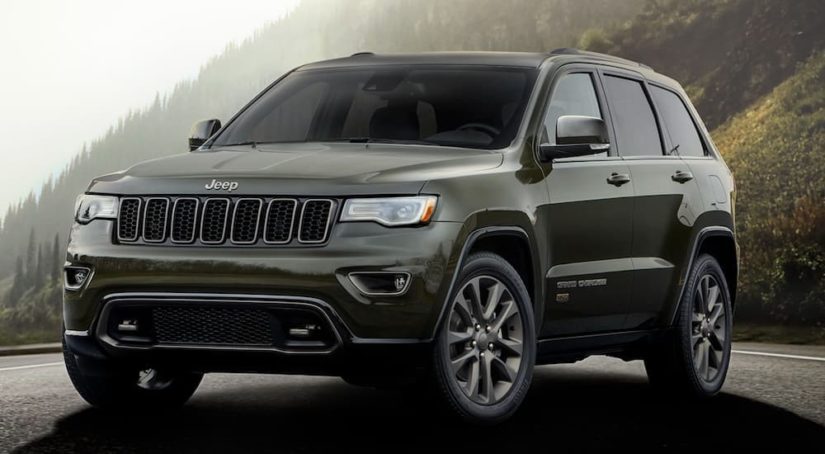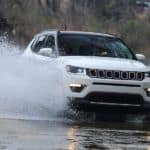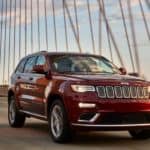Appreciating the many attributes of a used Jeep Cherokee is best accomplished by pitting it against its most worthy competitors. Some of the most iconic nameplates of all time occupy a spot in the cluttered compact crossover category, including the Subaru Outback, Honda’s CR-V, and the omnipresent Ford Escape.
Before you commit to the Cherokee, consider these other popular models. Depending on the model year, factors like generational life cycle, equipment additions, and safety ratings could tip the scales. We favor the Cherokee for its year-over-year consistency, Jeep heritage, and Trail Ready capability, but it’s OK to make this mini-Jeep earn it.
The things that are important to compact SUV buyers tend to be universal. Price is key, as is fuel economy, cargo capacity, and on and off-road capability. Unique to this category of buyers is a strong desire for their ride to reflect who they are, whether it’s via exciting exterior paint colors or signature features. So, add style and quirkiness to the list.
How does the Cherokee stack up to the competition, and what are our favorite alternatives? We get granular as we evaluate the pool of popular used compact crossovers.
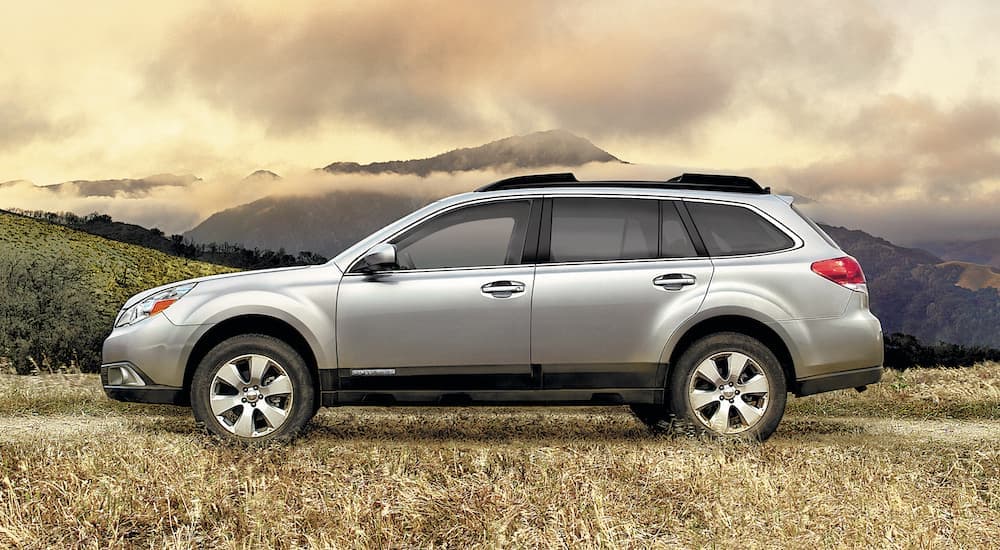
The Subaru Outback
This hybrid car/crossover/SUV barely makes our list of compact crossovers to consider precisely for its ambiguous exterior styling. Is it a station wagon? Not really, because it’s lifted like a crossover, but that slanted, elongated front end belies its crossover designation. Either way, the Outback deserves a closer look for its legendary all-wheel drive capability.
The Subaru brand aligns with many of the same lifestyle associations Jeep is fond of embracing: adventure, go-anywhere versatility, and practicality. Both Subaru and Jeep manufacture vehicles that are at home both on and off-road, and neither veers too far out of their lanes. Sure, you can find luxury features on the Outback and the Cherokee, but that’s not their primary appeal.
The Outback has – for 28 years and six generations – been a consistent option for buyers looking to drive the safest and most capable all-wheel drive vehicle without committing to a boxy SUV. The Outback has the heart of a rugged pickup, but its lifted car-like profile opens the door for buyers turned off by bulk to enjoy all the benefits of Symmetrical All-Wheel Drive.
Sales numbers don’t lie, and since 2011 Subaru has consistently sold over 100,000 Outbacks every year. More recent years saw a substantial increase in units sold. In 2017, nearly 190,000 Outbacks left dealer showrooms in the U.S., an astounding increase that illustrates the company’s success conveying the many benefits of Outback ownership. The Outback also shares a key quality with the Cherokee: it holds its value. The used Outback market is as robust as the new one.
The Honda CR-V
It’s not terribly original to drive a no-brainer, and if ever there was a vehicle that fits this description, it’s the inimitable Honda CR-V. However, try as they may, other automakers simply can’t duplicate the secret sauce that makes the CR-V so attractive to so many. The CR-V is just that good from every angle: it’s affordable, safe, and reliable. So many compact crossover shoppers are first-time buyers, so reliability and reputation play a big part in their decision.
Not only does it tick the practical boxes, but recent model years reflect Honda’s focus on good looks and performance. Also, the newer CR-V lineup includes a hybrid powertrain option, furthering its already massive appeal. The CR-V is approaching the beginning of the end of its fifth-generation, having received a full redesign for 2017. Typically, as a vehicle nears the end of a generation, sales begin to falter, but the CR-V is still going strong.
Here’s the thing: the CR-V is Honda’s cash cow. It’s the best-selling Honda nameplate ever and has been for years. The company has sold over 300,000 of them every year since 2012, and that number shows no sign of decreasing. In 2019, nearly 400,000 CR-Vs were sold. This means investment, upgrades, and innovation are always in the mix. From a quality standpoint, the CR-V is unmatched, and Honda will keep investing in improvements as long as sales remain robust.
That’s the upside. The downside is, a mass-market vehicle like the CR-V lacks distinguishable style characteristics. It’s a vanilla option – a safe one – that hundreds of thousands of other buyers are also choosing. If safe appeals to you and you don’t mind parking next to 100 other CR-V owners at the mall, by all means, buy one. It’s hard to dispute the evergreen dependability of a Honda, especially if you’re a first-time buyer.
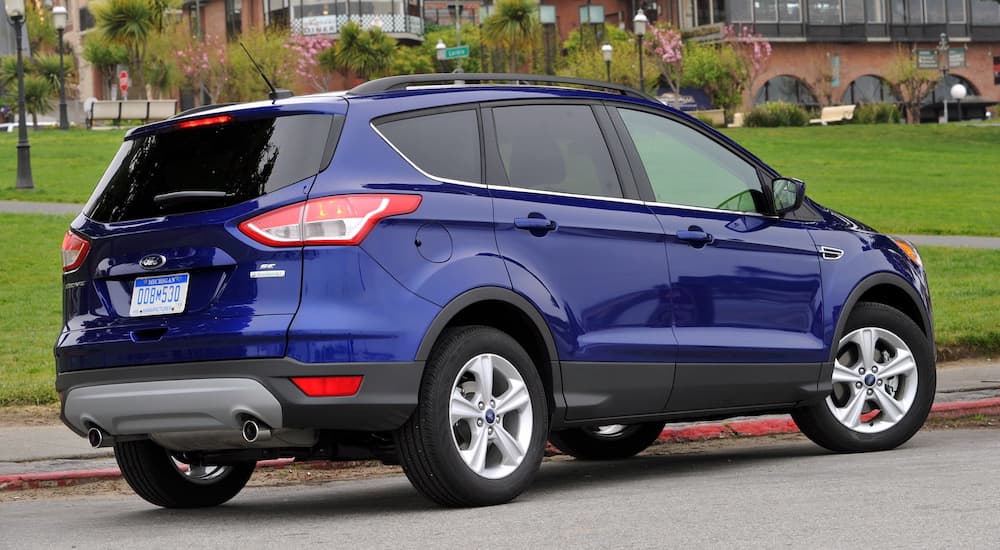
The Ford Escape
If ever a vehicle existed that shape-shifted to chase changing buyer preferences, it’s the Ford Escape. Don’t believe us? We’ll wait while you pull up a photo of the original 2008 Escape and put it next to one of the current model. What you’ll see is a transformation that probably warranted a nameplate change as the two vehicles share almost no similarities.
The Escape went from truck-like mini-SUV to station wagon-inspired crossover in a matter of two generational evolutions. That’s a big change and one that substantially altered buyer demographics. Billed as a versatile and capable crossover by Ford marketers, the Escape settles into its new iteration with some interesting cosmetic features. It thoroughly shed any evidence of its truck heritage in favor of a more contemporary and universally appealing form.
Newer Escape models offer a cool two-tone exterior color palette and offbeat hues like the rust-colored Bronze Fire. Compact crossover buyers like a little quirkiness (example: Kia Soul), so Ford’s right on target with the uncommon color options. It’s not the biggest crossover in the category, nor is it the smallest. Performance numbers are also average, as is its starting price. In short, the Escape is a middle ground entrant designed to make buying it an easy decision.
We like the third-generation series for its fresh look and seven model year-lifespan. It’s within the third gen that you’ll find the best value on the used market, as well as the first hybrid powertrain offering and the first modern infotainment technology. Is it the best crossover in the segment? Not by a long shot, but it is a Ford, and a best selling one at that.
Making a Case for the Cherokee
These three models represent the most common and most worthy alternatives to the Jeep Cherokee. From the Outback’s exceptional all-wheel drive system to the CR-V’s reliability and the Escape’s everyman appeal, it makes sense to put them on your comparison list. However, the Cherokee still reigns.
There’s enough diversity in the Cherokee lineup to satisfy a range of buyers, including those seeking luxury (Limited and High Altitude) and off-road capabilities (Trailhawk). Jeep structured its trim range to accommodate budget buyers without alienating those seeking a little more comfort. It’s a product mix that works especially well in the compact crossover category.
Try as they might, the Cherokee’s competition will never elicit a Jeep Wave from fellow owners. They’ll also never wear an authentic Trail Rated badge. Jeep’s seven-slot grille is the consistent distinguishing physical characteristic that anchors its brand identity, and Jeep buyers appreciate that continuity. In other words, owning a Jeep means being part of a lifestyle.
Why does that matter? We slide behind the wheel of our vehicles multiple times every day. Pride of ownership is what justifies the monthly payment. Americans consider their vehicles an extension of who they are, and the Jeep Cherokee conceals its compact crossover practicality with the style of a brand that personifies adventure. Who wouldn’t want to be a part of that?
